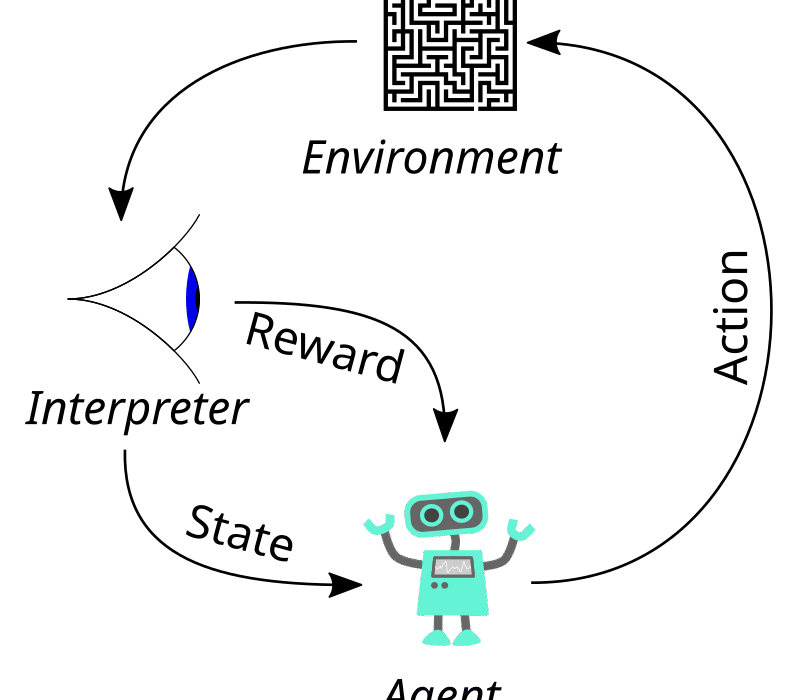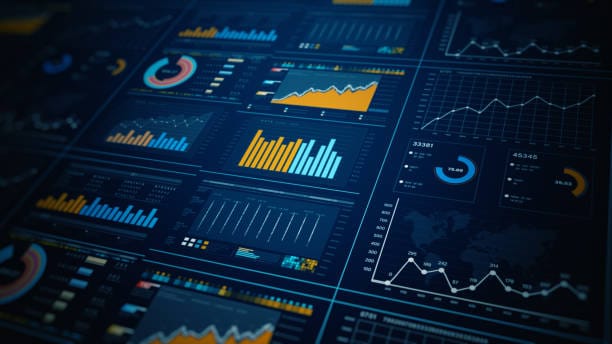In the early days of computing, data analysis was a slow and manual process. Analysts would sift through mountains of data, searching for patterns and trends with little more than a pencil, paper, and a basic calculator. As the world entered the digital age, this process became more efficient with the development of software tools capable of organizing and processing large datasets. However, even the most advanced analytical software still required significant human intervention to draw meaningful insights.
Today, we find ourselves on the cusp of an incredible transformation in the world of data analytics, one driven by the power of artificial intelligence (AI) and machine learning (ML). These technologies are not just improving the way we analyze data—they are completely changing the landscape, enabling faster, more accurate, and more nuanced insights than ever before.
In this article, we will explore how AI and machine learning are reshaping data analytics, examining their impact on various industries, the challenges they present, and the profound changes they bring to the way we make decisions.
What Is Data Analytics?
At its core, data analytics is the process of examining raw data to uncover patterns, trends, correlations, and insights that can inform decisions. It is an interdisciplinary field that involves various techniques from statistics, computer science, and domain expertise. Data analytics can be divided into several stages:
- Data Collection: Gathering raw data from multiple sources, which may include sensors, databases, websites, and social media.
- Data Processing: Cleaning and organizing data so that it can be analyzed. This involves handling missing data, removing outliers, and standardizing formats.
- Data Analysis: Applying statistical models and algorithms to identify patterns and correlations. This stage often requires significant domain knowledge to interpret results correctly.
- Data Visualization: Presenting the findings in a clear and accessible format, often through charts, graphs, and dashboards, so that decision-makers can understand and act upon the insights.
- Decision-Making: Using the insights to guide business strategy, policy, or operational decisions.
Traditionally, much of this process has been manual, requiring human analysts to sift through data, identify relevant trends, and draw conclusions. However, the introduction of AI and machine learning has revolutionized this process by automating many of these tasks and uncovering insights that would be nearly impossible for humans to detect.
Understanding AI and Machine Learning
Before diving into how AI and machine learning are transforming data analytics, it’s important to understand what these terms mean.
Artificial Intelligence (AI) is a broad field of computer science focused on creating machines that can simulate human intelligence. This includes tasks like reasoning, problem-solving, perception, and decision-making. AI is often divided into two categories:
- Narrow AI: Specialized systems designed to perform specific tasks, such as facial recognition, language translation, or playing chess. These systems are highly effective at their designated tasks but cannot generalize beyond them.
- General AI: A more ambitious form of AI, aimed at creating machines with the ability to understand, learn, and perform a wide range of tasks, much like a human. While general AI is still largely theoretical, narrow AI is already transforming various industries.
Machine Learning (ML), a subset of AI, refers to algorithms and statistical models that allow computers to learn from and make predictions based on data, without explicit programming. Instead of following pre-programmed instructions, ML systems use patterns in the data to improve their performance over time. There are three main types of machine learning:
- Supervised Learning: The model is trained on labeled data, where both the inputs and the correct outputs are provided. The algorithm learns to map inputs to outputs and can then make predictions on new, unseen data.
- Unsupervised Learning: The algorithm is given unlabeled data and must find hidden patterns or groupings without guidance. Clustering and association are common techniques in unsupervised learning.
- Reinforcement Learning: This type of learning involves an agent that interacts with an environment and receives feedback in the form of rewards or penalties. The agent learns to maximize its rewards over time by experimenting with different actions.
Together, AI and machine learning are enabling systems to handle and analyze massive amounts of data much faster and more accurately than humans could ever do on their own.
The Role of AI and Machine Learning in Data Analytics
The integration of AI and machine learning into data analytics is ushering in a new era of efficiency, insight, and automation. Below are several key ways in which these technologies are transforming the field.
1. Automation of Data Processing
Traditionally, data processing has been one of the most time-consuming steps in data analytics. Analysts would manually clean and organize the data, dealing with issues such as missing values, duplicates, and formatting inconsistencies. This process is not only labor-intensive but also prone to human error.
AI and machine learning are changing this by automating much of the data processing work. For instance, ML algorithms can automatically detect and correct errors in datasets, such as identifying outliers or filling in missing values. Natural language processing (NLP) algorithms can be used to extract structured data from unstructured sources, such as text documents, social media posts, or customer reviews. This dramatically reduces the time and effort required to prepare data for analysis, enabling analysts to focus on higher-level tasks.
2. Predictive Analytics
One of the most powerful applications of AI and machine learning in data analytics is predictive analytics. By analyzing historical data and identifying trends, machine learning models can make accurate predictions about future events. For example, in retail, ML models can predict customer buying behavior, helping businesses optimize inventory levels and marketing campaigns. In finance, ML algorithms can forecast stock prices, interest rates, or credit risks, enabling more informed investment decisions.
Unlike traditional statistical methods, which rely on predefined models and assumptions, machine learning can automatically learn from the data and refine its predictions over time. This ability to continuously improve makes machine learning particularly effective in dynamic environments where conditions change frequently.
3. Anomaly Detection
Anomaly detection is the process of identifying patterns in data that do not conform to expected behavior. This is particularly valuable in fraud detection, network security, and quality control. For example, in financial transactions, machine learning models can detect unusual spending patterns that may indicate fraud. Similarly, in cybersecurity, ML algorithms can identify abnormal network activity that could signal a potential cyberattack.
Machine learning models are highly effective at detecting anomalies because they can analyze vast amounts of data and recognize subtle patterns that would be difficult for humans to spot. Over time, these models improve as they are exposed to more data, making them increasingly accurate at identifying anomalies.
4. Natural Language Processing (NLP) and Text Analytics
Another area where AI is making a significant impact is in text analytics and natural language processing (NLP). Much of the data that businesses collect is unstructured—such as text from emails, social media posts, customer feedback, or news articles. Extracting meaningful insights from this data has traditionally been a challenge.
With the rise of NLP, AI algorithms can now analyze and interpret human language, allowing organizations to extract insights from unstructured data sources. For example, sentiment analysis algorithms can assess customer reviews or social media posts to determine whether the sentiment is positive, negative, or neutral. This allows businesses to monitor customer satisfaction, detect emerging trends, or even anticipate potential issues before they escalate.
NLP can also be used to automate tasks like chatbots for customer service, allowing businesses to provide quick, efficient responses to customer inquiries. Additionally, AI-powered transcription services can convert audio or video data into text, which can then be analyzed for trends or insights.
5. Data Visualization and Decision Support
Data visualization is a critical part of the data analytics process, as it allows decision-makers to interpret complex datasets quickly and easily. AI and machine learning are improving data visualization in several ways.
First, AI algorithms can automatically generate meaningful visualizations from raw data, suggesting the most appropriate charts, graphs, or heat maps based on the underlying patterns. This eliminates the need for analysts to manually select the best visual representation of the data.
Second, machine learning can enhance decision support systems by providing real-time insights and recommendations. For example, in the healthcare industry, AI-powered decision support systems can analyze patient data and suggest personalized treatment plans. In marketing, AI can recommend the most effective strategies for reaching target audiences based on data-driven insights.
6. Personalized Customer Experiences
AI and machine learning are also revolutionizing the way businesses interact with their customers. By analyzing customer data—such as purchase history, browsing behavior, and social media interactions—AI systems can create highly personalized experiences. For example, e-commerce platforms use machine learning algorithms to recommend products based on a customer’s past behavior, increasing the likelihood of a purchase.
Personalization goes beyond product recommendations. In the entertainment industry, for example, streaming services like Netflix and Spotify use machine learning to curate personalized playlists and movie recommendations based on user preferences. In the travel industry, AI can suggest personalized vacation packages, flights, and activities based on past travel behavior.
This level of personalization can significantly enhance customer satisfaction and loyalty, leading to increased sales and retention.
7. Enhanced Decision-Making
At its core, data analytics is about improving decision-making. AI and machine learning are enhancing this process by providing faster, more accurate insights and predictions. In the past, decision-makers had to rely on historical data, intuition, and their own expertise. Today, they can leverage AI-powered analytics tools that sift through vast amounts of data and offer data-driven recommendations.
Machine learning can identify patterns and correlations that humans might overlook, providing decision-makers with insights that are more comprehensive and precise. Furthermore, as AI systems continue to learn and improve, the accuracy of their recommendations will only increase, allowing for more confident decision-making across a wide range of industries.
Challenges and Ethical Considerations
Despite the many benefits of AI and machine learning in data analytics, there are also challenges and ethical considerations that must be addressed. One of the main challenges is the interpretability of machine learning models. Many advanced algorithms, such as deep learning models, are often considered “black boxes” because their decision-making processes are not easily understood by humans. This lack of transparency can make it difficult to trust the recommendations made by these models, particularly in high-stakes environments such as healthcare or finance.
Another challenge is bias in AI systems. Machine learning algorithms learn from historical data, and if that data is biased, the algorithm can perpetuate and even amplify those biases. For example, if an AI model used in hiring is trained on data from an industry with a historical lack of diversity, it may inadvertently favor candidates from certain demographic groups over others. Ensuring fairness and eliminating bias from AI systems is a critical challenge for the future of data analytics.
Finally, there are privacy concerns related to the vast amounts of personal data that AI systems rely on. With the rise of data breaches and increasing concerns about surveillance, ensuring that data is collected, stored, and used responsibly is paramount.
Conclusion: The Future of Data Analytics
AI and machine learning are fundamentally changing the face of data analytics, enabling faster, more accurate, and more personalized insights. By automating data processing, improving predictive analytics, detecting anomalies, and enabling personalization, these technologies are helping businesses and organizations make better decisions, faster.
As these technologies continue to evolve, the potential for even greater innovations in data analytics is enormous. However, to fully realize this potential, it is essential to address the challenges and ethical concerns surrounding AI and machine learning.
The future of data analytics will undoubtedly be shaped by AI and machine learning, and those who embrace these technologies will be better positioned to navigate the complex, data-driven world that lies ahead.






